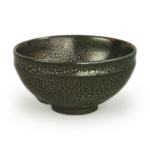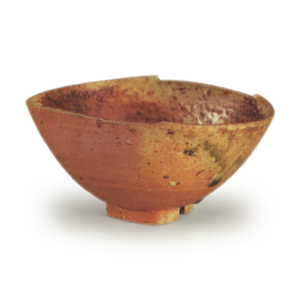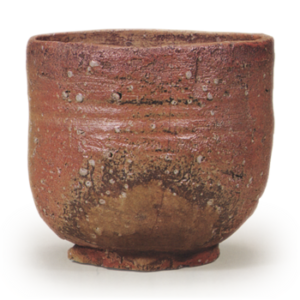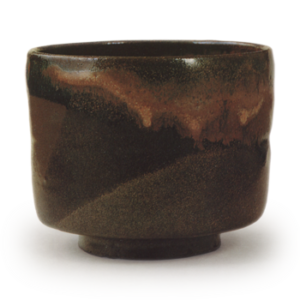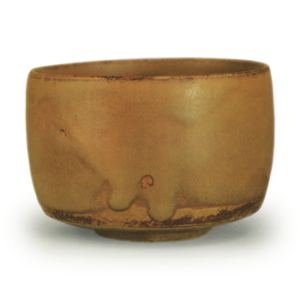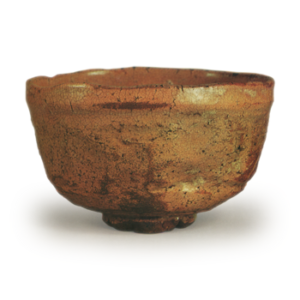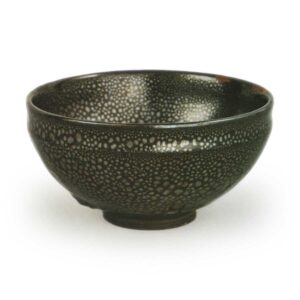
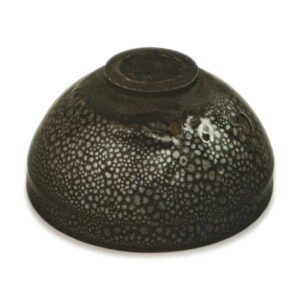
Important Cultural Property
Ryuko-in
Height: 4.6cm
Diameter: 9.0cm
Outside diameter of foot ring: 3.5cm
Height of foot ring: 0.4cm
The size of Tenmoku tea bowls is generally standardized. If you look at the data for the bowls collected in this volume, you will see that the diameter is approximately 11 to 13 cm and the height is 6 to 7 cm, and that the size is consistent, as if it were stamped with a seal. The volume is such that it can be held in both hands with a little extra space.
However, the Ryuko-in bowl and the Fujita Museum Yuteki Tenmoku bowl, which we will look at next, break this standard and are ridiculously small. As you can see from their measurements of just over 4 cm in height and 9 cm in diameter, they look extremely small to the eye accustomed to the size of a normal-sized Tenmoku bowl. They are truly lovely works. However, it is not small and shabby. The small bowl-shaped form shines like a jewel, and even shows the imposing majesty of a king.
There is a foot ring and a clay band around the foot ring, but because it is covered in iron sand, the color and texture are not clear. However, it is thought to be made from fine white clay, as it is recognized as being from the same kiln. A little of this white can be seen peeping out around the corner of the foot ring. This was done to make it look like black clay, in the style of the Tenmoku ware from the Tenkyo kiln.
The shape is beautifully finished on the wheel, and the foot is also neatly carved. As can be seen from the fact that the diameter is twice the height, it has a rather flat, bowl-like shape. However, as usual, the slightly recessed rim gives the impression of a deep interior. The glaze is applied rather thinly over the entire surface, and the silver oil spots are beautifully combined with the somewhat sepia-toned black background. The shape of the oil spots is almost perfectly round, but the glaze around the outer edge has bubbled due to the heat of the kiln, and there are a few places where the glaze has peeled back. The glaze is finer just below the outer rim and where the banded zone ends and the curve to the foot begins. This is probably because the glaze layer is particularly thin in these areas. On the other hand, the oil drops are very large near the flat base of the interior, and in particular, the grains there are somewhat sunken.
This is probably due to the fire and glaze layer.
This has been handed down in Ryuko-in, Daitoku-ji Temple since ancient times, and is accompanied by a beautiful mother-of-pearl inlay stand. There is an inlaid gold name on the inside of the stand, but it is not clear what it means.

